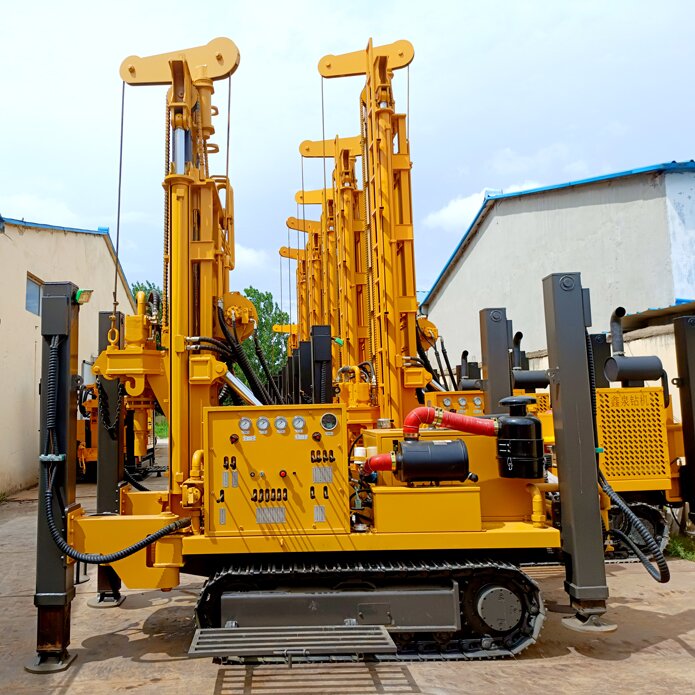What are the types of water well drilling rigs
Water well Drilling Rigs can be categorized into various types according to different classification criteria. The following is an introduction to the common ways of categorization.
Classification according to drilling method
Rotary Drilling Rig: The drill bit is rotated to break the rock and carry the rock chips out of the well through the drilling fluid.
The drill bit rotates to break up the rock, and the drilling fluid carries the rock chips out of the well.
Advantages: High drilling efficiency and adaptability.
Disadvantage: Higher requirements for drilling fluids.
Impact Drilling Rig.
The drill bit impacts the rock through up and down reciprocating motion to break the rock.
Advantages: simple structure, easy to operate.
Disadvantages: Lower drilling efficiency, poor adaptability to the formation.
Composite Drilling Rig: Combined rotary and percussion drilling rigs.
Combining the advantages of rotary and percussion, it can choose different working methods according to different stratum conditions.
Advantages: strong adaptability, high efficiency.
Disadvantages: complex structure, high cost.
Classification according to power source
Diesel-driven drilling rig: using diesel engine as power source, simple structure, strong mobility.
Electric motor-driven drilling rig: using electric motor as the power source, environmentally friendly, but higher requirements for power supply.
Hydraulic-driven drilling rig: using hydraulic system as power source, flexible operation, high efficiency.
Classification according to drilling depth
Shallow Drilling Rigs: Mainly used for drilling shallow water wells from tens to hundreds of meters.
Deep drilling rigs: Mainly used for drilling deep water wells from several hundred meters to several thousand meters.
Other classifications
Classification by drilling fluid type: can be categorized into water drilling, mud drilling, air drilling and so on.
Classification by drilling method: positive circulation drilling, reverse circulation drilling, etc.
Factors affecting the selection of drilling rigs
Stratigraphic conditions: Different stratigraphic conditions require different drilling rigs.
Drilling depth: The drilling depth determines the power of the drilling rig and the length of the drilling tools.
Water quality: Different water quality requires different drilling fluids and drilling tools.
Construction environment: The constraints of the construction environment will also affect the choice of drilling rig.

Choosing the right drilling rig requires comprehensive consideration of the above factors in order to ensure the smooth progress of the drilling project. If you don't know how to select the right water well drilling rig, click the link below to contact our professional team directly.
Contact us (gzpearldrill.com)
